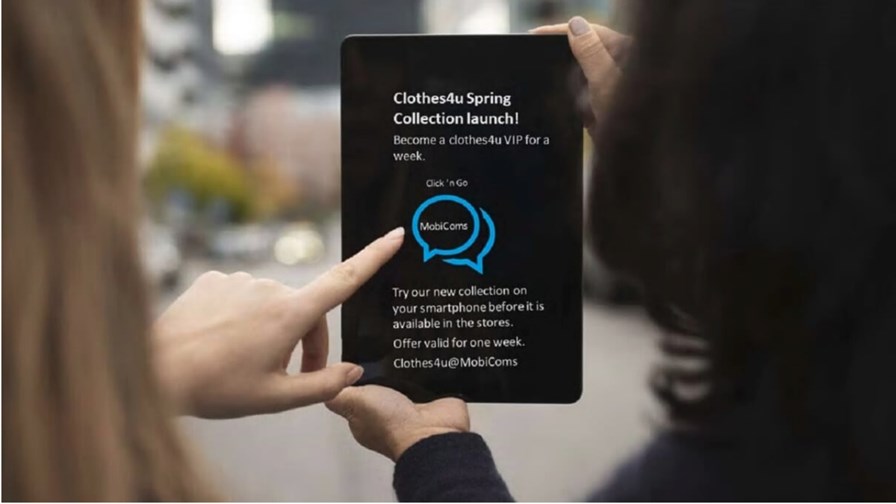
Source: Ericsson
- Ericsson’s solution follows extensive user surveys and stakeholder discussions
- It says the eSIM promises to benefit everyone, but CSP’s tend to see it as a threat rather than an opportunity
- Whatever the arguments it’s agreed that the eSIM is on its way
It must surely be ironic that while I can use my smartphone to purchase any sort of good or service and - no matter how small and trivial or how large and important - secure it by phoning in the ‘long number’ on my card, there’s one thing I can’t buy straight off the bat on my phone - the actual telecom service it’s running on.
To get to first base with my target mobile service provider I must first be mailed a Subscriber Identity Module - a SIM card. Then, once inserted, I can generally choose, pay for and activate the service of my choice. But if I want a different service provider, I’ll have to get a new SIM card. It’s an arrangement that tends to inhibit service switching and has long been in the crosshairs of regulators who want to create a more competitive market in mobile services.
Now all that may be about to change with the arrival of the so-called eSIM... finally. The idea has been around for a while and has been pushed by a variety of players, but now Ericsson says it’s about to launch, confident that it has a strong tail-wind of user support behind it.
The vendor says the introduction of an electronic subscriber identity system means an improved user experience and, it claims, will be beneficial for device manufacturers because devices can be designed with end-users and consumers in focus.
“The eSIM solution offers remote provisioning of user profiles and device management, claims Ericsson, “key functions that enable CSPs to manage user profiles in a more flexible way.
The Ericsson move is based on data showing that consumers want to use and are willing to pay for eSIM services. A consumer survey, carried out in five countries and representing approximately 200 million smartphone users, supported the creation of six eSIM-based use cases. In other words, consumers were probably asked if they wanted the following - and having said ‘yes’, it all pointed at an eSIM solution:
Connected devices – Easily add on other devices to an existing bundle in a few clicks
Try and buy – Try out new offerings for 3-4 days before purchase, for example.
Travel specials – Use a local data tariff for surfing – billed by home operator
Connectivity insurance – When the user has no network coverage and needs to make an important call or send a message, any mobile network can be used
Marketing campaigns – Flexible business and marketplace model used by other companies for special launches
Events – Flexible business and marketplace model used by event organizers
Users may like all these things, but Ericsson also claims providers will benefit too. Based on the survey data, it estimates around 10-15 per cent revenue growth per eSIM smartphone subscriber should eSIMs be introduced. The biggest draw for consumers, it says, is expected to be ‘connected devices’ in the above list. Users have long felt thwarted when unable, or restricted, from adding other devices to a mobile data service.
Interestingly the ‘Try and Buy’ possibilities were raised yesterday when discussing the shortcomings of mobile provider performance rankings. The only way currently to find out for sure if a given service operates acceptably for your exact use case and at your habitual locations, is to test two or three available services and pick a winner. A ‘try and buy’ option, as described above, would enable that perfectly.
Not surprisingly some service providers are wary. If the eSIM makes it easier for users to swap providers and rejig their plans, there are fears that competition between CSPs will cause a race to the bottom
According to Lynette Luna, Principal Analyst at Global Data: "Most CSPs see eSIM-enabled smartphones as more of a threat than an opportunity. But eSIMs may very well be what CSPs need to break the falling ARPU curve, if they implement and market the capability correctly. eSIM can enable new use cases that can actually strengthen the customer experience."
Monica Zethzon, Head of Solution Area Communication Services at Ericsson, says: “When we developed our eSIM manager we focused on ease of use for the end-customer. If a service provider has both the secure entitlement server and eSIM manager from Ericsson we can enable a 100 percent automated provisioning of eSIMs. This offers a highly efficient way to provide flexibility and good customer experience for consumers.”
Ovum’s eSIM ‘Device Sales Forecast Report: 2019–24’, published in January 2020 predicts that in 2020, 5 percent of all smartphones will be eSIM. This is set to increase to 20 percent in 2024. Further, eSIM devices are predicted to grow annually by 60 percent CAGR, thanks to the efficient and automated support for end-to-end onboarding of these devices.
Email Newsletters
Sign up to receive TelecomTV's top news and videos, plus exclusive subscriber-only content direct to your inbox.




